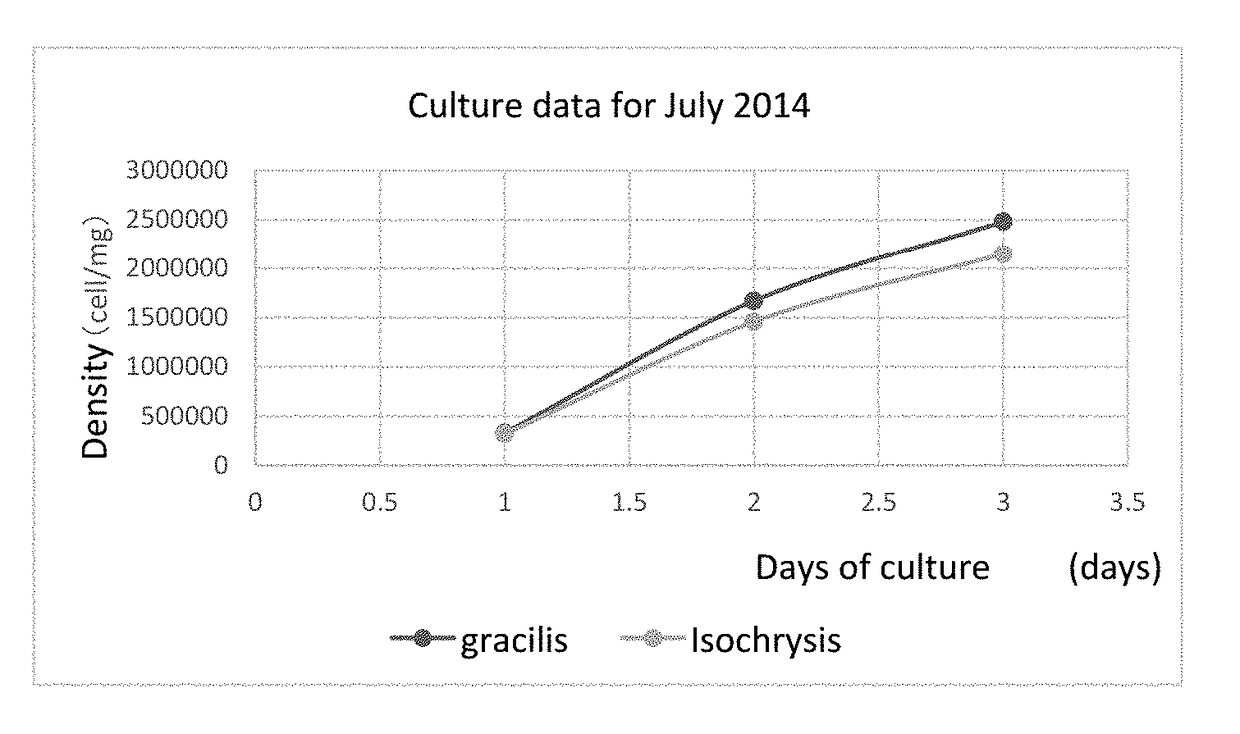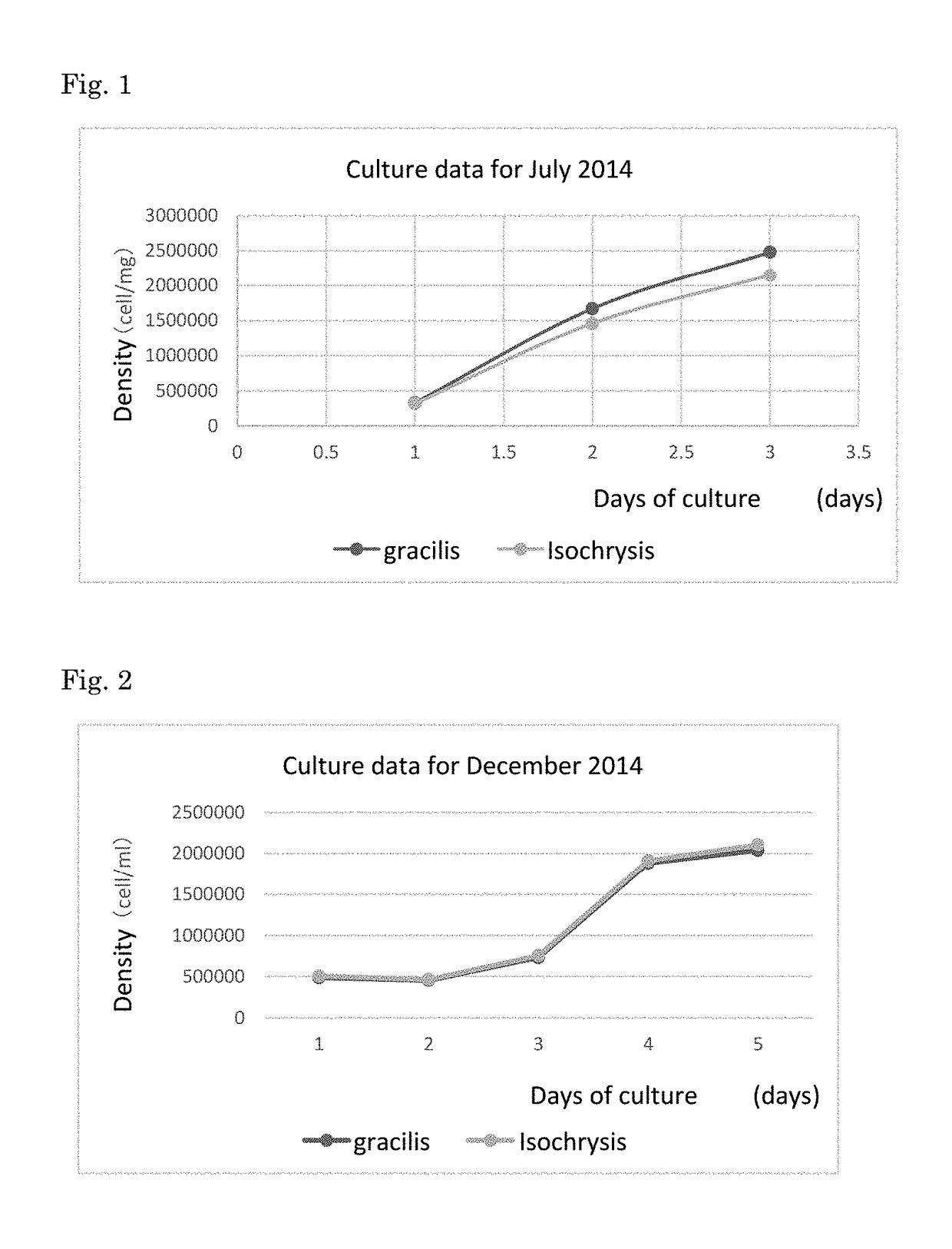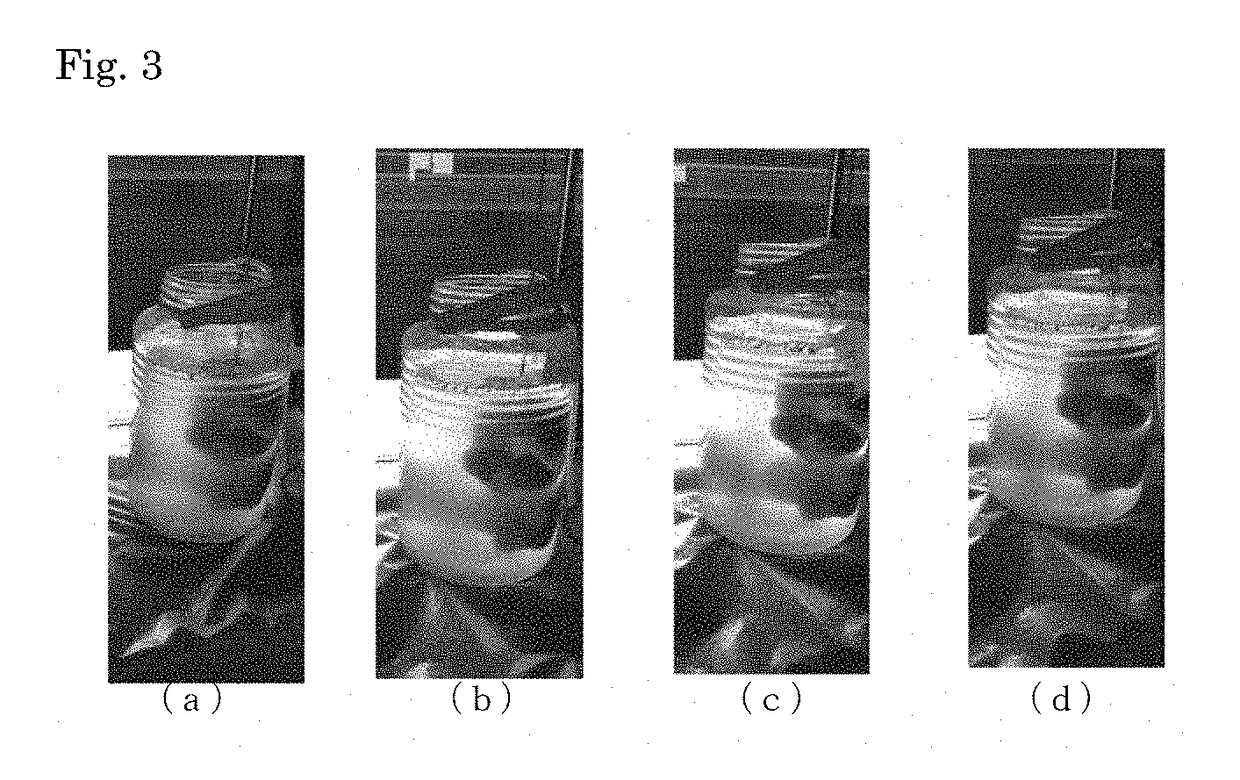Method for cultivating oysters on land
- Summary
- Abstract
- Description
- Claims
- Application Information
AI Technical Summary
Benefits of technology
Problems solved by technology
Method used
Image
Examples
examples
[0073]Now, the present invention will be described in more detail with reference to experiment results.
[0074]First, the method for culturing microalgae as feed for oysters is examined, as Experiment 1, by using clean, eutrophic deep-sea water free of pathogenic viruses or bacteria.
[0075]Culturing was performed by using deep-sea water, as a microorganism-free, clean seawater, and a culture rack (with a fluorescent lamp and an aeration apparatus) set in a room. First, 5 mL of original cells at a culture density of 10000000 cells / mL was put in a 3 L flask, and aerated at 5 mL / min with light irradiation to initiate culturing at a seawater temperature of 8 to 18° C. When a color appeared 1 to 2 days after the initiation of culturing, 1.5 mL of a fertilizer was added dropwise. Light irradiation was performed with the fluorescent lamp, and aeration was constantly performed at a maximum rate (5 mL / min).
[0076]In the culturing, two types of microalgae, the diatom Chaetoceros gracilis and the ...
PUM
 Login to View More
Login to View More Abstract
Description
Claims
Application Information
 Login to View More
Login to View More - R&D
- Intellectual Property
- Life Sciences
- Materials
- Tech Scout
- Unparalleled Data Quality
- Higher Quality Content
- 60% Fewer Hallucinations
Browse by: Latest US Patents, China's latest patents, Technical Efficacy Thesaurus, Application Domain, Technology Topic, Popular Technical Reports.
© 2025 PatSnap. All rights reserved.Legal|Privacy policy|Modern Slavery Act Transparency Statement|Sitemap|About US| Contact US: help@patsnap.com



